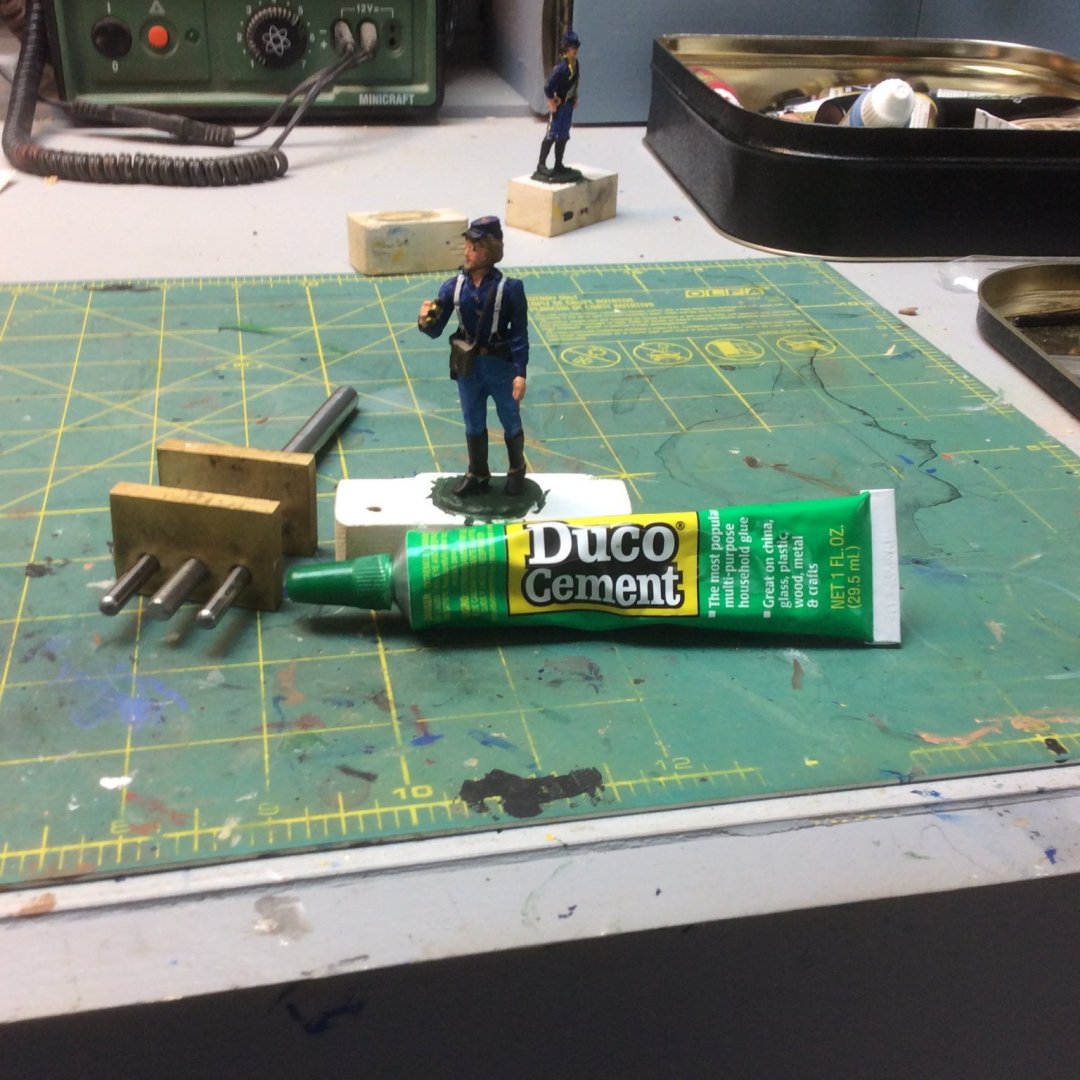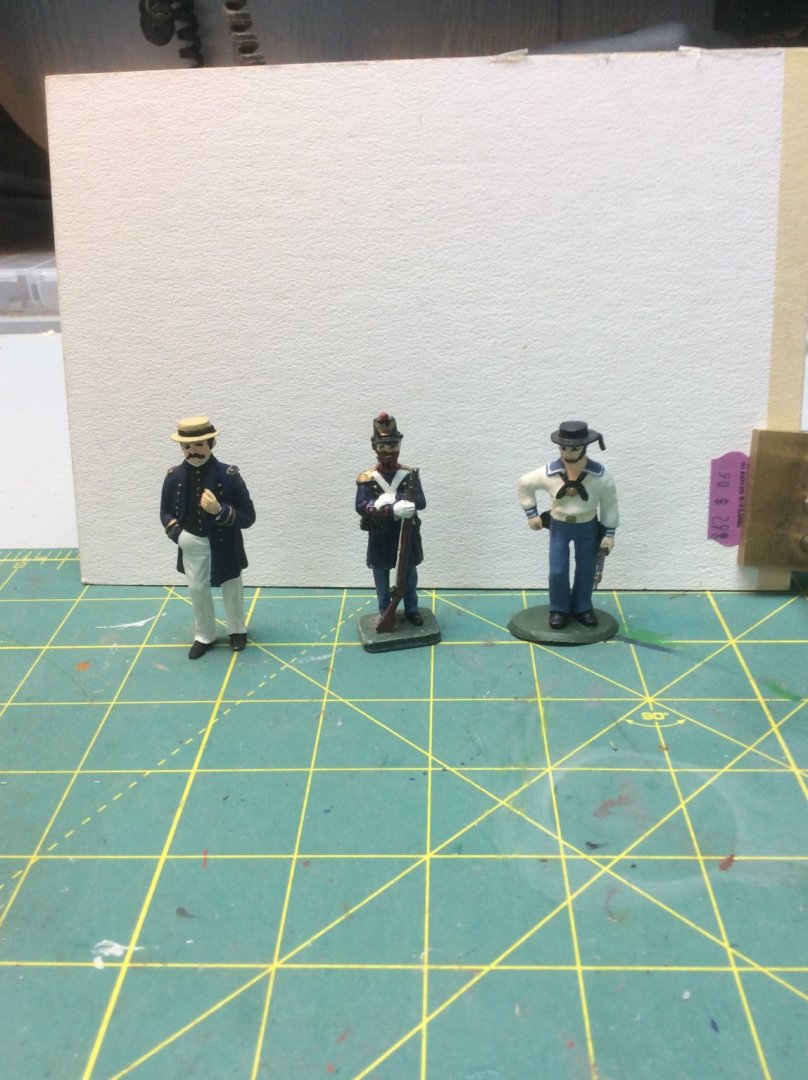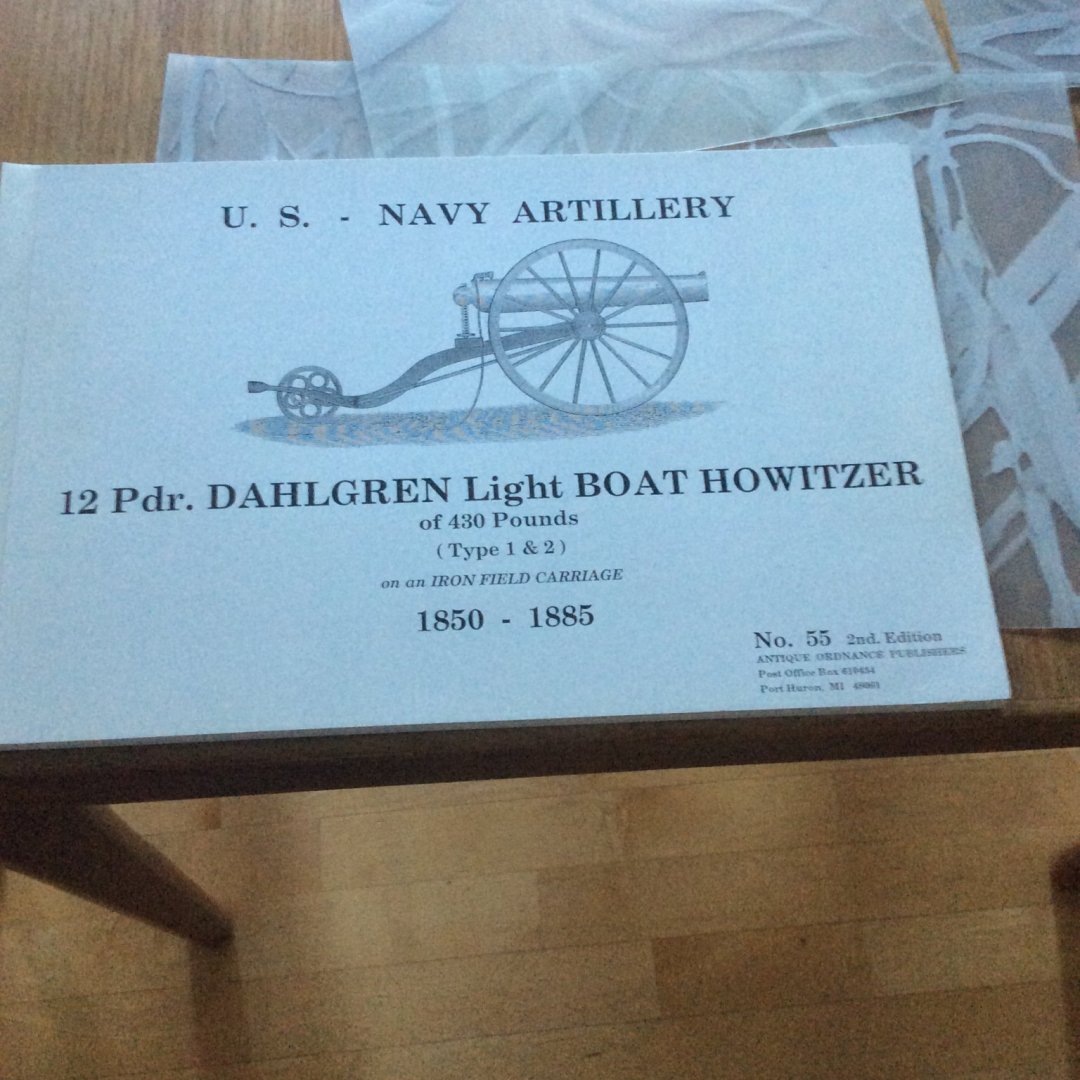
Roger Pellett
-
Posts
4,519 -
Joined
-
Last visited
Content Type
Profiles
Forums
Gallery
Events
Posts posted by Roger Pellett
-
-
According to Wikipedia Anzio Annie was at Aberdeen and since 2005 has been on display at Ft. Lee, Petersburg, VA.
I believe that the American railway guns that fought in France during WW I were actually Navy, using 14in battleship tubes and Navy crews. Again, according to Wikipedia the Army built some guns using the Navy barrels on improved carriages but they had not been shipped to Europe when the war ended.
The gun with it’s carriage on display at the Washington Navy Yard s one of the 14in guns that fought in France. It is impressive.
Roger
-
-
Amazing project!! If my mental metric conversion math is correct, the real thing would have had a bore of 32in. That’s twice the bore of the main armament of an Iowa Class Battleship. Am I correct? Was this actually built and used?
Railroad guns are fascinating. The museum at the Washington Navy Yard used to have one of the ones built for service in France during World War I. It was built around a Battleship gun- 16 or 14in. If a kit for one of the WW I guns was available I would be tempted.
Roger
-
At least 10 years ago there was an article in the Nautical Research Journal about the construction of a model of the gunboat USS Bennington. I believe that there was a connection to the San Diego Maritime Museum. The author formed cowl ventilators by electroplating a metal plug that he had cast. The plug was cast from a metal used by gunsmiths to cast impressions of gun cylinders. This metal (maybe called Cerro?) has a melting point close to the boiling point of water. After electroplating, the plug was immersed in boiling water leaving only the electroplated shell.
Roger
-
-
The steward brings coffee from the galley, called via the intercom.
- Keith Black, Bedford, mtaylor and 2 others
-
 5
5
-
I hesitate to give advice to an accomplished modeler, but here’s my setup for painting figures. The Duco cement is the old model airplane cement, Maybe Ambroid in the UK? It easily separates with a single edged razor blade, although my figures are metal. The little hand vice is handy for positioning the figure for hard to get to areas.
Your guy looks great. Nice work.
Roger
- Edwardkenway, Jack12477, mtaylor and 6 others
-
 9
9
-
Very nice, OC. The two models, both nicely done really compliment each other. The figures and equipment are lifelike.
Roger
- mtaylor, popeye the sailor, Egilman and 3 others
-
 6
6
-
-
-
The best reference that I know of is an NRJ article by Eric Ronnberg about historic paint colors. An edited version is included in the NRG published Shop Notes (I think Volume II) and was at one time included on the NRG website.
You can also occasionally find references in old specifications. For example, an 18th Century longboat specification required the interior to be painted “drab.” Looking up drab color on the Internet I found it to be a mixture of burnt umber and white lead that I mixed from acrylic artists colors.
Roger
-
-
Rather than using wall paint, custom colors can be mixed from tubes of acrylic artist’s colors. I have had good luck mixing these pigments with artist’s matt medium. For use in my airbrush they are thinned with water. I do not pretend to understand the intricacies of using a color wheel. Instead, I mix them by eye. For old colors like “drab” and “straw” formulae can be found on the Internet.
Roger
-
Brass tubing is the modelmakers friend. Short pieces can be used to line drilled holes to produce a clean sharp edge where required. It can also be used to make a miniature hole saw for cutting sharp edged holes in wood.
Roger
- Canute, BobG, thibaultron and 2 others
-
 5
5
-
I’m not familiar with the vessel, but if it is one of the World War II era tugs it would have had a steel plated hull. If that’s the case, I would fill in the areas between the bulkheads with wood blocks- basswood or pine and then shape the hull. I would then plate it like the real thing.
Roger
-
Looks nice!
Roger
- Canute, mtaylor and thibaultron
-
 3
3
-
A trick that can work rather well is to paint raised stripes like cross belts first and to then paint the uniform base coat up to it. This would work especially well in your case as these details appear to be molded in heavy relief.
Roger
- Canute, popeye the sailor, mtaylor and 2 others
-
 5
5
-
Wonderful work, OC!! Can this somehow be combined with your Mosquito.
Roger
- Canute, Edwardkenway, Egilman and 2 others
-
 5
5
-
Over here “across the pond” Mystic Seaport Museum hosted a large exhibition of Turner’s work in it’s new art gallery. It was the only American institution selected for this exhibition. My wife and I stopped to see it on our way to the NRG Conference. Temerarie not included but lots of other works demonstrating Turner’s amazing abilities.
Roger
-
By the time that your grand daughter is a young adult and able to fully appreciate this beautiful model, who knows what technology will be available to let her see below decks. A very inexpensive endoscope?
Roger
- Retired guy, KeithAug, FriedClams and 2 others
-
 5
5
-
-
Jerry,
Here is a picture of some Civil War era US Navy figures that I painted. Material is lead alloy. Size is 52mm, a standard military miniature modeling scale, which would be close to your 1:36. I believe that they were sculpted and cast by a company named Kramer Miniatures. Although these date from the 1980’s, some recently show up on EBay. I recently bought one with the all blue uniform.
The second picture is a plan set for the 12 pounder light boat howitzer that was used in launches of Sloops of War. I bought mine from Dixie Gun Works but suppliers of Civil War reinactment gear also sell them. At one time they published a plan set for the 12 pounder heavy boat howitzer but it seems to be out of print and I have not found a used copy.
BTW, what is the overall length of Constellation’s launch? I have been trying to read it from the National Archive drawing but can’t make it out.
Roger
- GrandpaPhil, egkb, JerryTodd and 1 other
-
 4
4
-
Why not a new category for ship model restorations?
-
Toni,
In Volume 44, page 220 of the Nautical Research Journal published in 1999 you will find an article by N. Roger Cole, Clinker Planking over a Fully Framed Hull. In it he describes clinker planking a model of a cutter similar to the one that you are building. About the same time he also published another article about copper sheathing a clinker hull
Roger




Battle of Waterloo Attack on La Haye Sainte Farm by Old Collingwood - 1/56 (28mm)
in Non-ship/categorised builds
Posted
Heavy Cavalry were shock troops that existed to break infantry formations by charging. Hence, big men on big horses that could be deployed at a favorable moment to win battles.
The other cavalry missions screening, scouting, etc. were performed by light Cavalry.
The terms heavy and light were, therefore, defined by mission.
Dragoons, were more like mounted infantry using superior mobility to position themselves to fight dismounted.
The American army has had Light Cavalry and Dragoon regiments but not Heavy Cavalry. It can be argued that a lack of Heavy Cavalry prolonged the American Civil War as infantry charges often ended in stalemates with the two sides yards apart exchanging fire. The ability for a commander to follow up an infantry charge with Heavy Cavalry would have changed the situation.
Roger